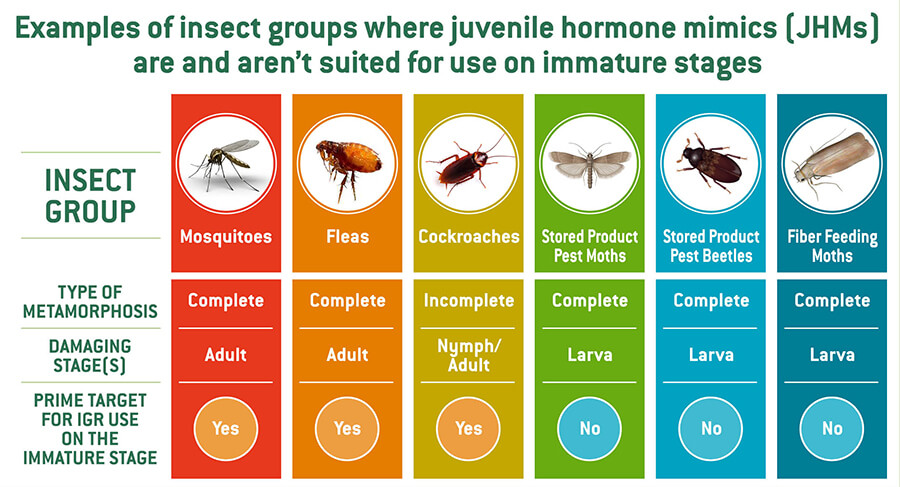Juvenile Hormone Mimics (JHMs) work on many different species of insects. This makes them highly versatile for population control in both commercial and residential pest control.
They tend to work extremely well on insect species with complete metamorphosis. That means they have very different looking immature and adult stages, such as fleas and mosquitoes, going from egg, to larva, to pupa, to adult.
However, they also have good efficacy on some insects with incomplete metamorphosis, such as cockroaches. Incomplete metamorphosis means there is a more gradual looking transition into adulthood going from egg, to nymph, to adult.
Cockroaches are problematic in both the nymph and adult stage, but more so in the adult stage as they tend to travel farther and become much larger and more visible. Preventing larger adult cockroaches and reducing reproduction with JHMs can be an extremely effective control tactic.
Using JHMs on immatures where the damage is caused by the adults, and not the immatures, is a great use of a JHM as it prevents damaging adults from occurring at all. Immature mosquitoes and fleas are prime candidates for JHM use.
Use of JHMs on insects with incomplete metamorphosis where the damage is caused by both the nymphal and the adult stages can also be very successful. However, you need to know the specific JHM works well on that species, such as pyriproxyfen on cockroaches.
Using JHMs on immatures where the damage is caused by the immature stage is generally not an ideal use of these products, as it will potentially increase the damage for a longer time before finally gaining control. I don’t generally recommend JHMs for immatures of these types of species, unless you don’t have any other options, or you are combining it with a faster acting insecticide. Some examples of these are stored product pests, such as red flour beetles, Indianmeal moths, clothes moths, and saw-toothed grain beetles.
There will always be exceptions to the rules, but I have found these to be helpful guidelines. I hope you find them useful too!

Additional Resources:
- Read about the importance of IGRs in Issue 8 of MGK’s PMP Pulse Newsletter
- NyGuard® IGR Concentrate is a juvenile hormone mimic that breaks the cycle of more than 50 pests

